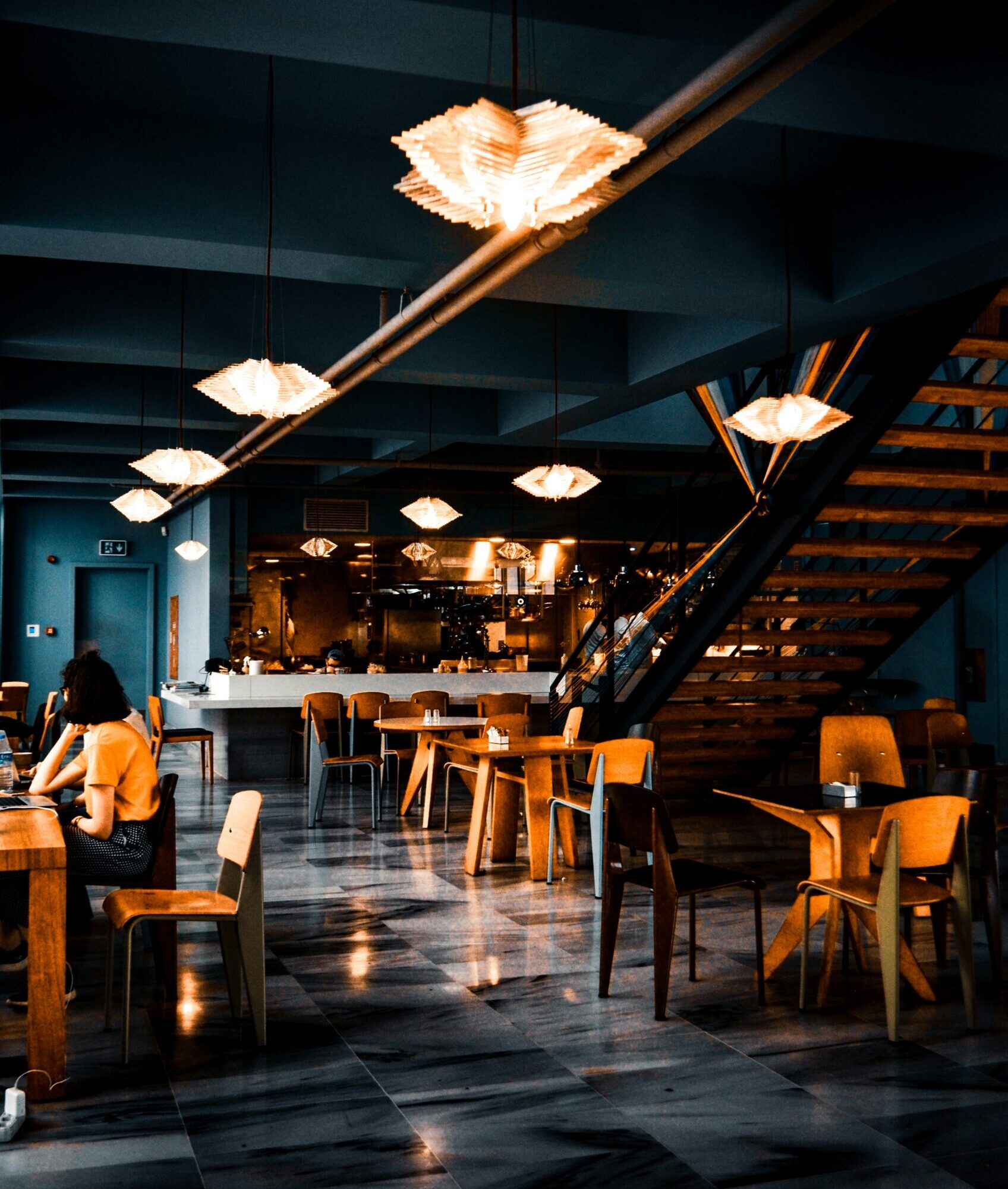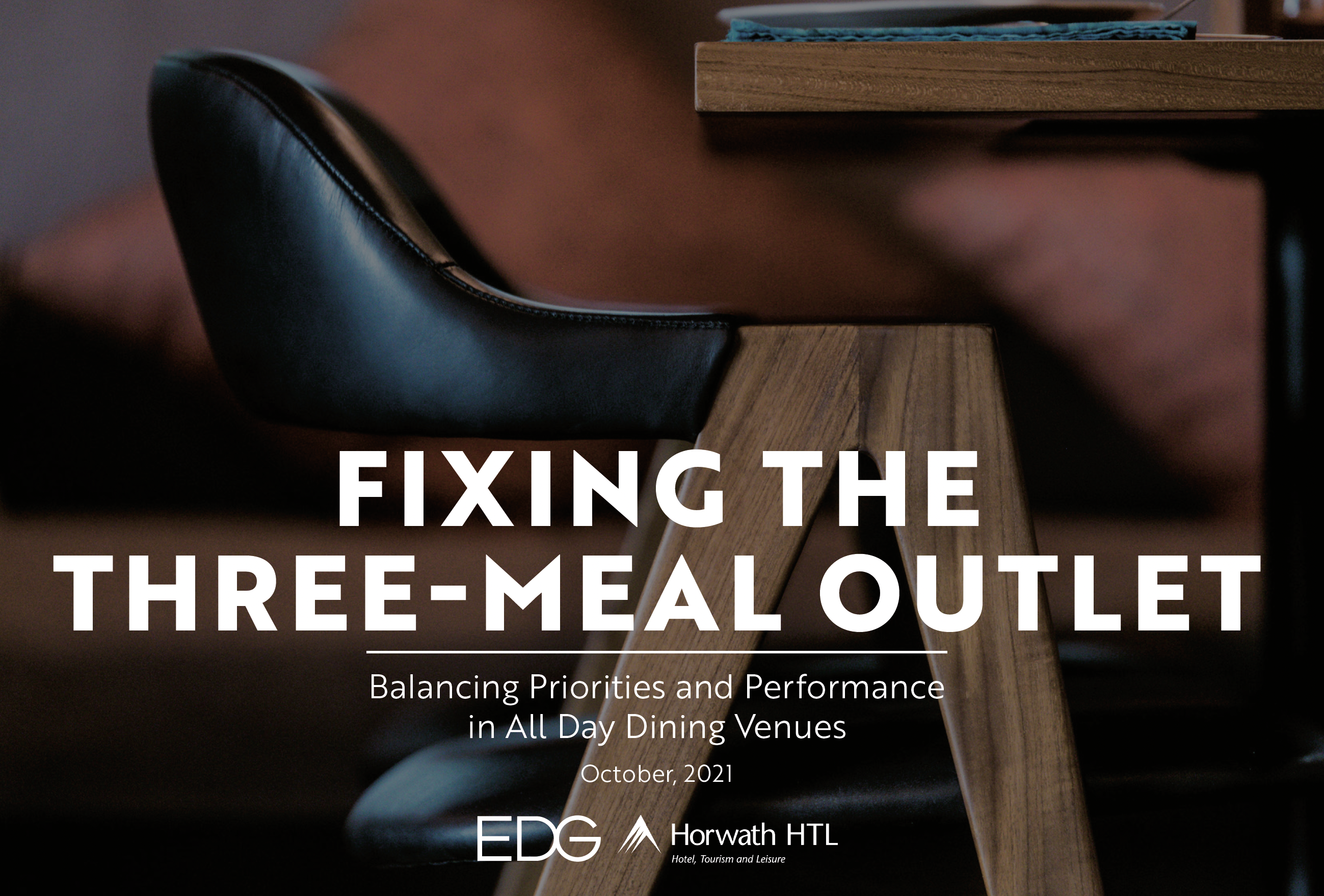
Industry Report
Fixing the Three-Meal Outlet
Classic All Day Dining restaurants struggle to compete with high-quality independent venues, in most cities. ADD outlets tend to be oversized, to accommodate breakfast demand, and lack compelling concepts.
This results in underutilization and low average spend, compared to specialty and independent restaurants. The current approach is commercially unappealing and wastes an opportunity for the hotel to engage with the local community and develop its reputation.
Horwath HTL and EDG Design have worked together to analyse ADD performance numbers across key markets in APAC, to understand and address this dynamic and drive more strategic F&B decision-making for these restaurants.
This report explores the need to rethink the design and strategy of ADD venues to maximise food and beverage (F&B) opportunities.
Reevaluating Breakfast Demand
While breakfast is an important meal, it should not be the sole driver for designing F&B spaces. In many markets, ADD venues struggle to capture a majority of in-house guests for breakfast, rarely exceeding 70% capture rates. This indicates that breakfast is not as critical to the guest experience as previously thought, suggesting that designing venues primarily for breakfast service may not be the most effective use of space and resources.
Market Analysis and Data Insights
The data from various markets, segmented into three groups based on hotel facilities, chain scale, and average rate performance, shows that:
- Group 1 (Economy and Select Service) hotels have the lowest breakfast capture rates.
- Group 2 (Midscale to Upscale Full Service) hotels show moderate performance.
- Group 3 (Upper-Upscale and Luxury) hotels have higher capture rates but still face challenges in fully utilizing ADD spaces.
Utilization rates across all groups are below the benchmarks for successful independent restaurants, which should average between 1.2 to 1.5 turns per meal period. This underperformance highlights the need for ADD venues to focus more on maximizing lunch and dinner services.
Independent Competition
In markets with a mature and competitive independent restaurant scene, ADD venues often fall short. Independent restaurants offer stronger value propositions, better quality, and more variety, drawing guests away from hotel dining options. This competition underscores the need for hotel F&B spaces to adopt a more flexible and market-driven approach.
Proposed Solutions
Flexible Design and Concept Strategy:
- Design ADD spaces that can function as separate, unique venues for different meal periods. This allows for a high-volume breakfast service while providing attractive options for lunch and dinner.
- Example: The Chinese National at Swissotel Jakarta PIK Avenue combines multiple concepts (BBQ, Sichuan specialty, noodle and dim sum, and tea house/cocktail bar) within a single space, which can flexibly serve breakfast and transition to independent dining venues.
Leveraging High-Value Meal Periods:
- Focus on creating compelling lunch and dinner experiences that can drive higher average spends and better utilization rates.
- Example: Pastore at Hotel Chadstone Melbourne, MGallery by Sofitel, prioritizes a wood-fire Italian concept for lunch and dinner, with the capability to extend breakfast service into adjoining spaces during peak periods.
The traditional approach of designing ADD venues primarily to meet breakfast demand is outdated and commercially limiting. By adopting flexible design strategies and focusing on creating strong, independent dining concepts, hotel owners can maximize the return on their F&B investments and better compete in markets with robust independent restaurant scenes. This shift in strategy can lead to higher utilization rates, increased average spends, and a more engaging guest experience.
Download the report
For detailed charts, graphs, and further analysis, download the full report here


